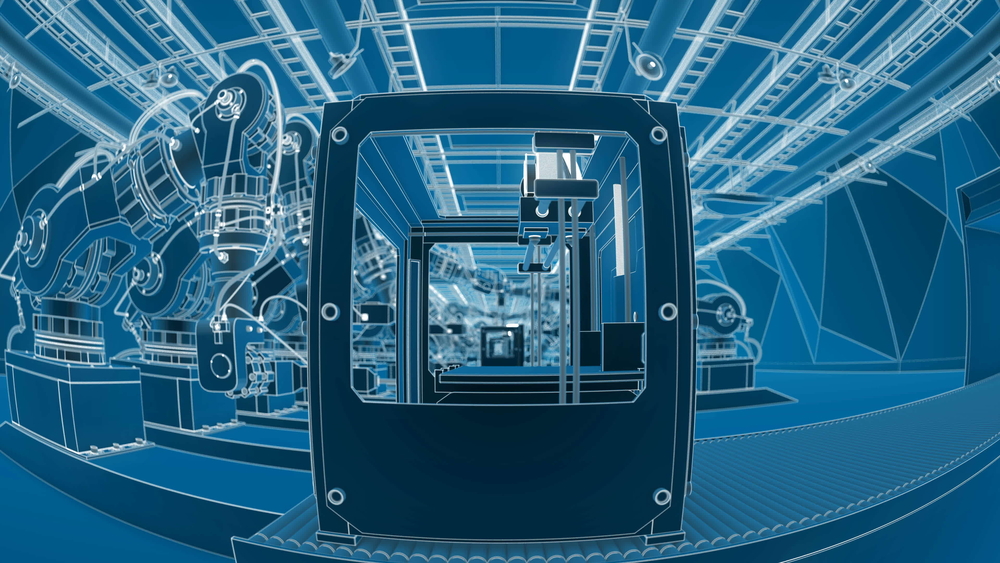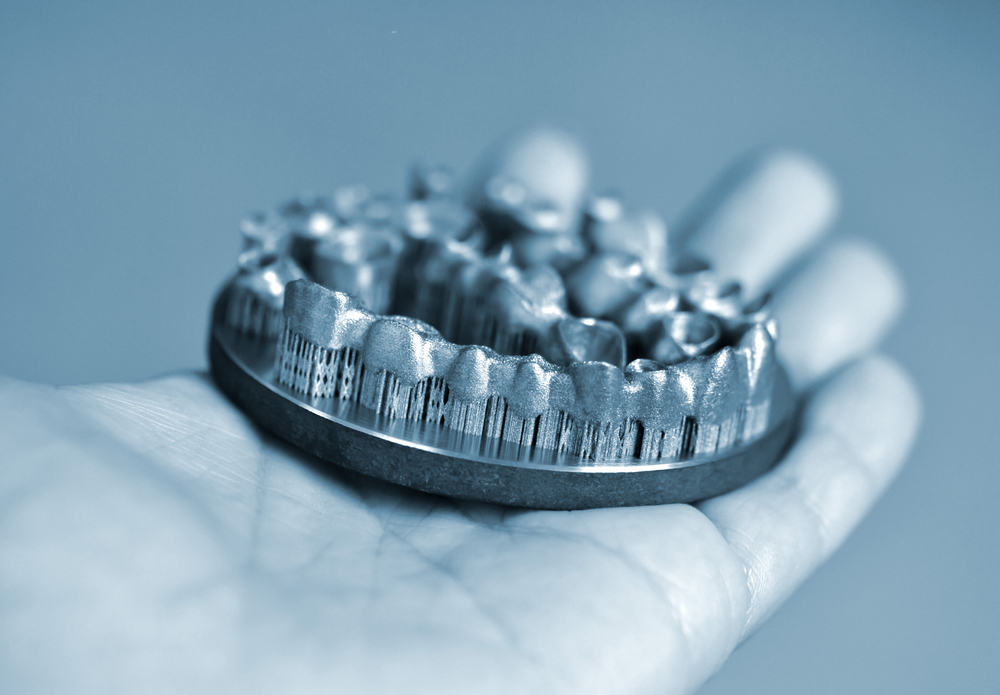As 3D printing has transitioned from a simple desktop to large industrial-grade systems, the capabilities, material properties, and 3D printed products have also advanced. Materials science, automation technologies, artificial intelligence (AI), and deposition processes are continually evolving and leveraged in 3D printing solutions. Innovation in each of the key areas: 3D printing machines, materials, and software as well as how they work together is shaping the future of additive manufacturing.
Companies unfamiliar with additive manufacturing and 3D printing processes may not know 3D printing is transforming manufacturing across multiple industries. Understanding the future of additive manufacturing will enable companies to stay competitive and even future-proof their businesses.

Six Advancements in Additive Manufacturing
Advancements in six key areas will drive the future of additive manufacturing:
Smart Factory
A “smart factory” is a highly automated facility that manufactures products with minimal labor. With low labor costs, smart factories can be located anywhere – even in traditionally high-cost regions. A modern smart factory leverages 3D printing to provide a simplified, yet highly scalable manufacturing process that can also produce a wide range of products. Manufacturing facilities can implement a fully additive manufacturing model or take a hybrid approach – with traditional and 3D manufacturing existing side by side – to more easily support scaling production up or down based on demand. As more 3D printing smart factories come online, more companies can implement an agile manufacturing approach and respond better to customer demand, while derisking production.
Increased Customization
Many products, such as apparel and medical devices, can benefit from or require some level of customization. Most dental products are custom e, where one or multiple units are produced to support the personalized treatment plan. Customization of high-volume products is traditionally complex and involves long and iterative cycles to get from a prototype to high volume production. The risk to this approach is that products with high SKU counts can cause tooling and assembly costs to balloon.

3D printing is an ideal alternative approach to supporting high SKU counts and enabling customization. With the elimination of tooling, additive manufacturing facilities can more easily produce customized products. The future of additive manufacturing is smart factory-connected 3D printers that directly connect additive manufacturing facilities to their customers – such as brand companies – through the cloud. Brand or product companies can order multiple custom products on demand from the additive manufacturing site. And, with a faster turnaround time, new approaches to supply chain and inventory management as well as product go-to-market are possible – including supplementing traditional manufacturing, localizing manufacturing to the customer, or even frequent batches of new/updated product drops. As high-mix, low-volume manufacturing becomes economical, 3D printing is not only a competitive manufacturing option, it will differentiate brand/product companies and make them more competitive.
Simpler and Faster Production
Newer 3D printing solutions have improved throughput by increasing the speed and build volume as well as significantly reducing post-processing. One of the recent enablers of greater simplicity and higher throughput is technology enhancements to DLP 3D printing processes that have implemented larger build areas and faster Z-printing. DLP printing processes have fewer steps, less post-processing compared to legacy 3D printing solutions, and can eliminate or reduce assembly for complex designs – in some cases improving process efficiency by 50-90%. Modern additive manufacturing providers are focusing on ‘production – first’ and building scalable solutions that simplify manufacturing and accelerate production.
Higher Accuracy
The most advanced 3D printing systems offer high resolution leveraging the same technology in TV screens. The best 3D printing systems are accurate at up to 50 microns. Leveraging optical processes in 3D printing systems is a key element in the future of additive manufacturing as they can be used as building blocks to increase the print area without impacting performance such as speed, as seen when scaling FDM 3D printing. With more advanced projection screens and resin-printing techniques, accuracy and the ability to print small features or elements will continue to improve.
Advanced Materials
3D printing systems can accommodate almost any design or geometry. Rather than having tooling determine which products can be manufactured, at additive manufacturing facilities – it will be which resins are available onsite. Additive manufacturing sites can produce products for many application areas and industries if they have the 3D printable resins onsite. One example of flexibility is in dental where one printer can produce many different kinds of dental appliances, such as surgical guides, night guards, and aligners with a suite of specialized dental resins. 3D printable resins and materials continue to improve at a rapid pace. The future of additive manufacturing is more productive sites, as each facility will have a broad range of materials to support diverse product lines.
Automated and Intelligent Software
Innovation in additive manufacturing software, such as generative design, cloud, and automation, and artificial intelligence (AI) software is simplifying manufacturing. For example, generative design can bridge the gap between what can be accomplished with traditional and additive manufacturing, and advancements in dental 3D printing software can heal models. Cloud software can aggregate and optimize manufacturing capacity across machines as well as allow customers to directly access available 3D printing machines for on-demand production. In the near future, additive manufacturing software will become more predictive, identifying machines that will need maintenance or automatically tuning printing parameters to ensure consistent production from machine to machine without a human operator.
Work With an Innovative 3D Printer Supplier
The future of additive manufacturing is continuing to simplify manufacturing and improve 3D printable materials to support more products across all industries. With the right innovative 3D printing partner that has a production-first approach to manufacturing, companies can implement a more agile business model and be more globally competitive.
LuxCreo offers some of the most advanced 3D printing solutions, giving manufacturers the tools they need to implement an agile manufacturing model for a broad range of products. Companies can take advantage of flexible, on-demand production in-house or leverage a smart factory-connected 3D printer to access a 3D printing Smart Factory with a suite of advanced materials.
To learn more about our industrial 3D printing processes, materials, and systems, visit our contact page or call (650) 336-0888.